Despite being the second largest city in Austria, Graz isn’t usually one of the first places people think of when planning a trip to Austria, and unlike Vienna and Salzburg, it receives only a small number of tourists per year.
Yet Graz has palaces and castles, similar to Vienna and Salzburg, as well as its own unique feel. The best places to visit in Graz include some curious modern attractions that you won’t find somewhere like Salzburg. If you’ve ever wondered about visiting this underrated Austrian city, then this guide is for you. With this Graz itinerary, you’ll see how you can spend 2 days in Graz and hopefully why you should give it a chance.
Best Time to Visit Graz
Like many places in Austria, Graz is a city that experiences all four seasons. Each season showcases different aspects of the city, meaning there’s not really any bad time to visit. The best time to visit Graz is going to depend greatly on what you’re looking to get out of your visit.
The best weather for outdoor sightseeing is in late-April, May, September, and October. These months have neither the high temperatures nor the heavier rainfall of summertime. This time of year is also outside Europe’s high season, but visiting then does mean you’ll miss out on summer festivals and outdoor dining. Winters in Graz are, of course, are cold and snowy, but visiting in December is actually quite nice thanks to the city’s fabulous Christmas markets.
How to Get Around Graz
To get everywhere we’ve included in this itinerary, it’s important you understand how to get around the city. There’s a strong focus on attractions in the heart of the city that you can easily walk between, but there are also places further out and up hills. Bad weather could also make walking less than desirable. Graz isn’t huge, but it’s still not the kind of city you’ll want to walk end to end.
Knowing how to get around when visiting Graz means understanding the city’s public transport options. Graz is connected by buses and trams that will help you get everywhere mentioned below. Both forms of transport use the same ticket system. Tickets are sold from the train station, Tabak/Trafik kiosks, machines onboard trams, and from the bus driver. A single ticket costs €2.50 and is valid for one hour.
To get to the top of Schlossberg without walking, you can either take the Schlossbergbahn Funicular or the Schlossberg Lift. The funicular uses the same tickets as public transport, while the lift costs €1.70 per trip.
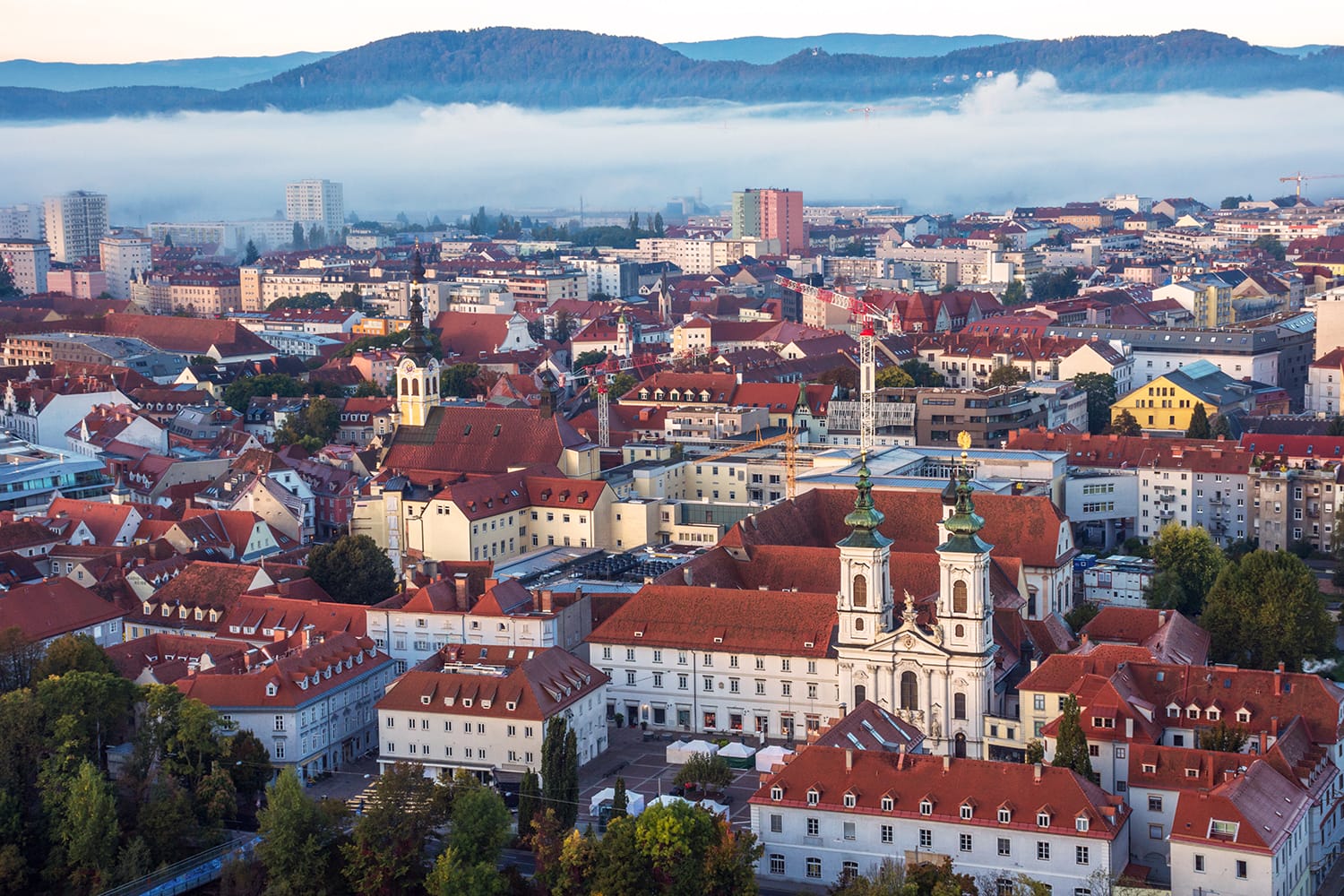
Where to Stay in Graz
You have a few choices when deciding where to stay in Graz as the city has a quite straightforward layout. The best places to stay in Graz are typically those that are close to the Old Town since that’s mainly where you’ll be spending your time while out sightseeing. However, you can rely on the city’s public transport if you need to, so staying across the river or on the far side of Graz Park isn’t a problem.
There’s no better place for a pampered stay while than the Palais Hotel Erzherzog Johann. This four-star hotel set inside a former Baroque palace is situated just steps from Hauptplatz and features spacious and elegantly designed rooms.
If a balance of cost and comfort is important to you, consider a stay at the Zur Steirerstub’n pension. This small family-run pension sits just across the river from the Old Town, has all the amenities you could need, and includes a really nice breakfast served each morning.
We also recommend looking at Airbnb for places to stay, especially since you can get up to $55 off your next Airbnb booking if you use our link.
Budget options are few and far between in Graz, with Minihotel Graz serving as your best bet for value for money. Within walking distance of the main square, this budget hotel offers clean rooms and great facilities like a common area and shared kitchen.
For more accommodation options in Graz, check out Booking.com. The company continuously offers the best rates, and its custom service is on point.
The Perfect 2-Day Graz Itinerary
In many ways, Graz is a perfect place for a city break as it’s just the right size to be explored in a matter of days. With 48 hours in Graz, you can take your time seeing the main sights and then move on to lesser-seen spots or places further from the city center. This Graz travel itinerary will help you do all that in a way that makes the most of your time, taking you from the Old Town to outer neighborhoods like Sankt Leonhard and Eggenberg. Along the way, we’ll show you exactly what to do in Graz in 2 days to best experience the city.
However, before we get to our Graz itinerary, we just wanted to remind you to purchase travel insurance. You never know what will happen and, trust us, you do not want to get stuck with thousands of dollars in medical bills. As a wise man once said, “If you can’t afford travel insurance, you can’t afford to travel.” So don’t leave home without it.
SafetyWing offers travel insurance for only about $10 a week, making it a no-brainer to get. You can get a quick, non-binding quote below:

SafetyWing is, of course, not the only option available. Two other popular alternatives are World Nomads and Heymondo.
Now that you’re covered for your trip should the worst happen, back to talking about all the best things to do in Graz.
Day 1 in Graz
Upon arriving in Graz, it’s best to head straight up the Schlossberg hill and then down to the city’s Old Town. This will take you straight to the best of Graz and gives you a real feel for the place.
Schlossberg
Rather than seeing the Old Town first, begin your day by climbing up the hill of Schlossberg. It was once the site of a fortress that protected the city, most of which is now in ruins.
There are still remnants of the old fortifications as well as of its bell tower (glockenturm) that was saved from destruction. The rest of the hill is now forest, park, and entertainment areas, making it pleasant to explore. Perhaps the best thing about heading up the Schlossberg is the incredible views you get from its various vantage points. A nice way to see Graz from different perspectives is to take the staircase that zigzags its way up Schlossberg, gradually showing you more and more as you climb higher.
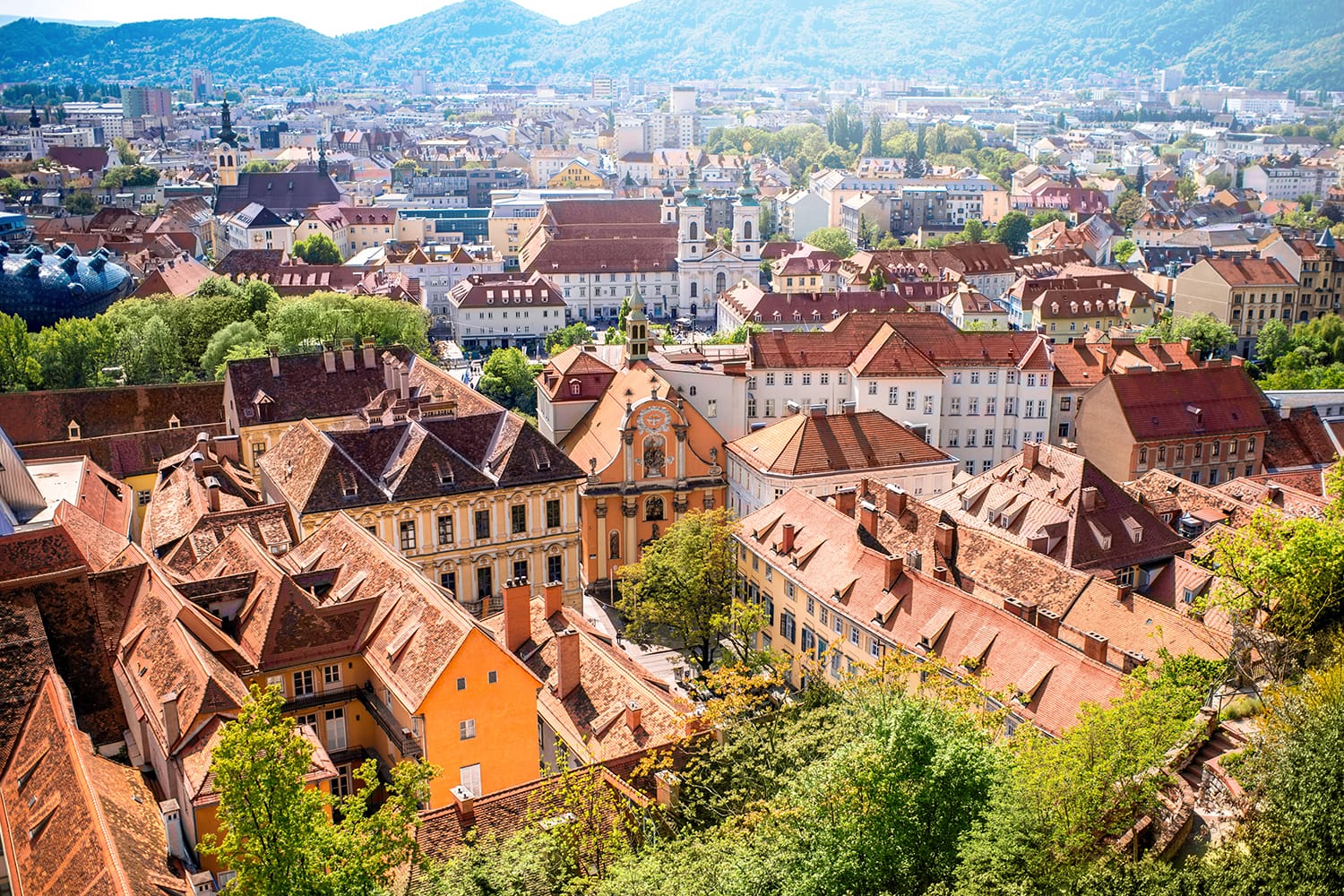
Clock Tower
The main landmark that all visitors to the Schlossberg need to stop at is the hill’s iconic clock tower. Known in German as the Uhrturm, this medieval clock tower has a prime position on the hill, directly facing the heart of Graz’s historical center. So beloved is the tower by the people of Graz that they paid a ransom to Napoleon in 1809 so that he would spare it.
Part of what makes this tower such an important symbol of Graz is its quaint look with its large wooden balconies and bold clock face. Interestingly, the hour and minute hands are reversed in size as the minute hand was added later on.
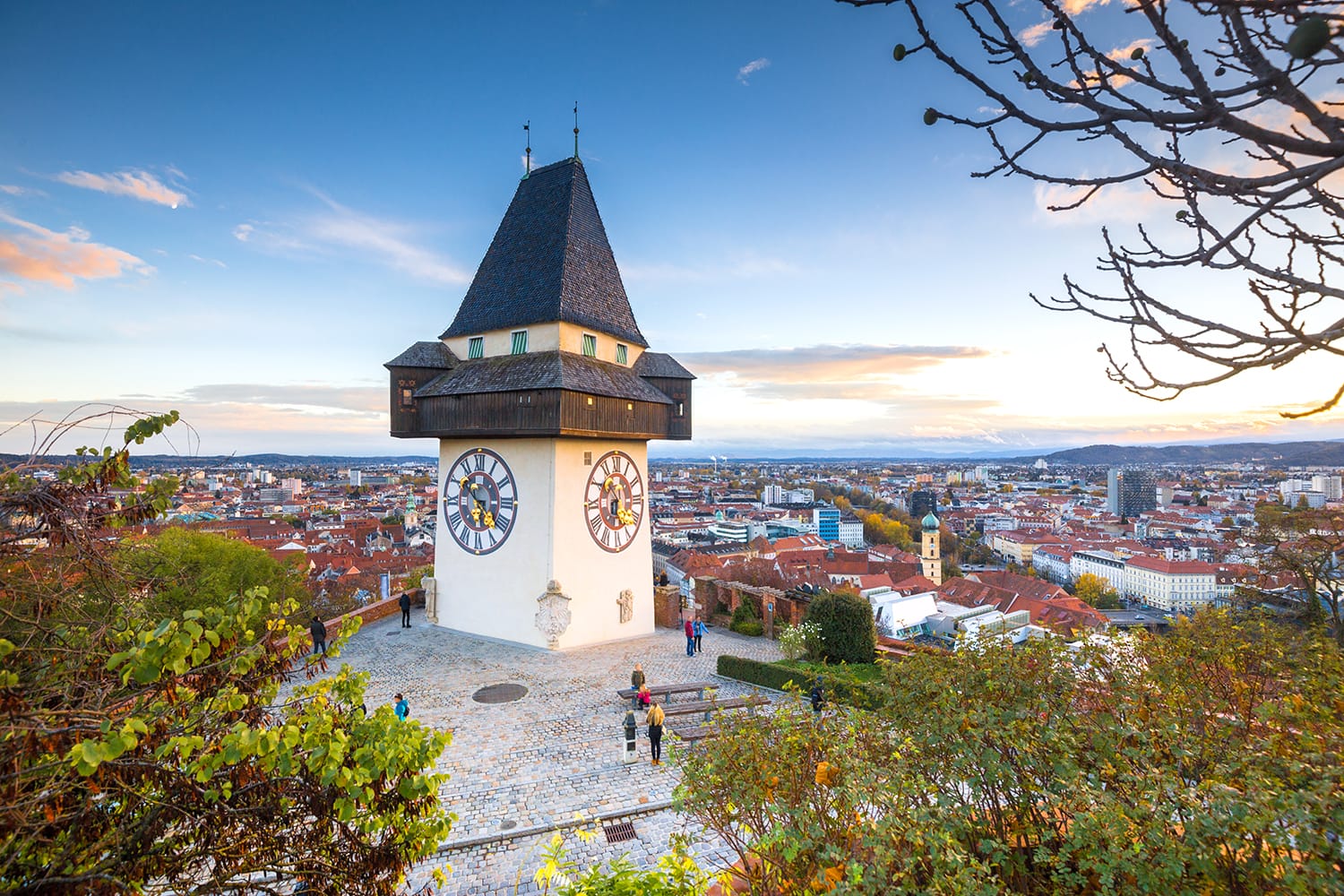
Old Town
Having seen an aerial view of it from Schlossberg, it’s time to see Graz’s Old Town at street level. Walking down into the streets lined with historic buildings, it becomes easy to see why UNESCO recognized it with World Heritage status. The historic center boasts plenty of narrow lanes and small squares where you’ll find a wealth of well-preserved buildings sporting medieval and Renaissance architecture. Here and there you’ll also see arcades that tunnel through to the next street along with bookshops and boutique stores.
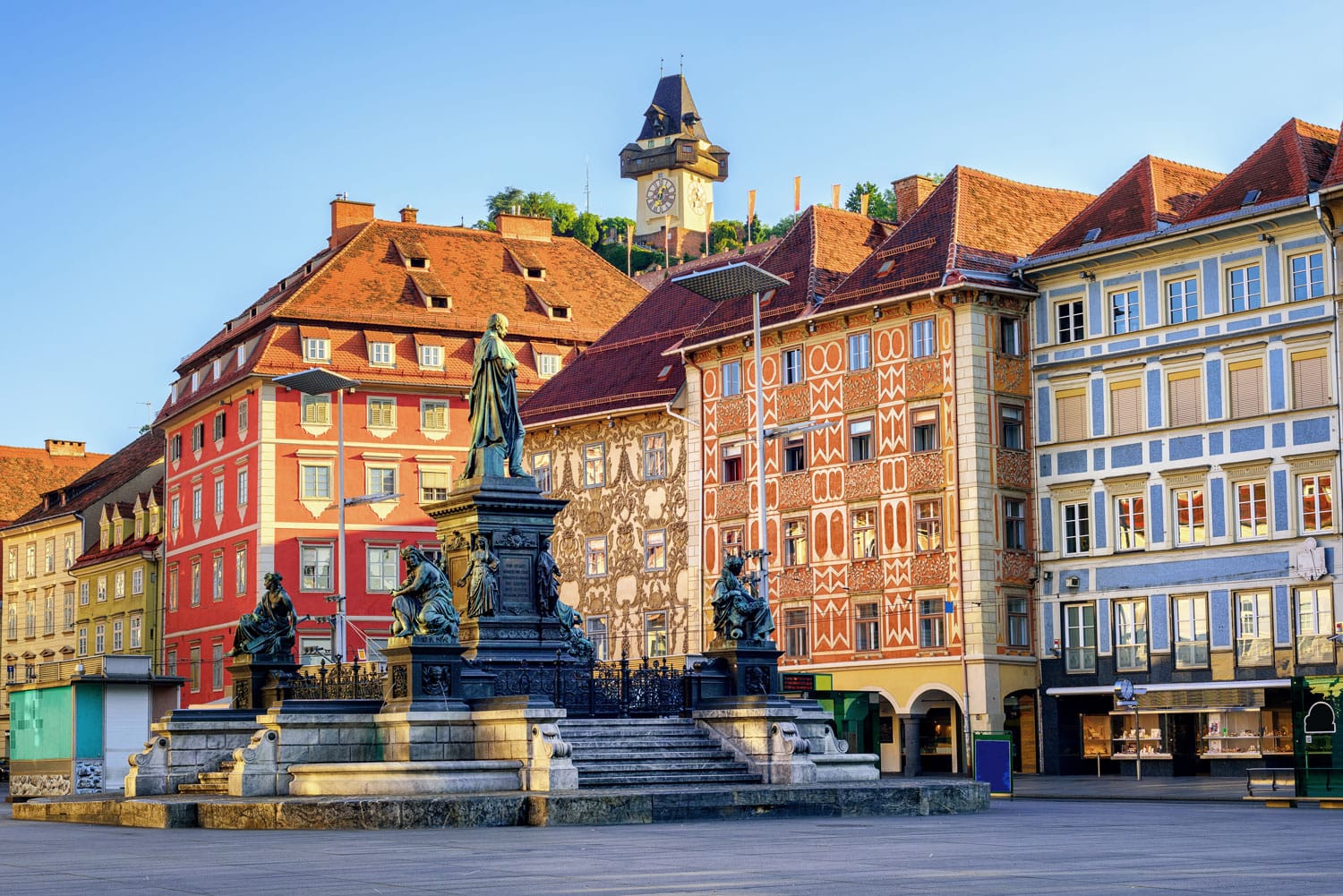
Hauptplatz
At the heart of Graz’s Old Town sits Hauptplatz, the city’s main square and center of action for all things Graz. This is where the city’s Christmas markets are held, as well as countless other festivals and events throughout the year. You may want to visit just to see what event is on while you’re in town to see if it interests you. As for buildings on the square, it’s hard to miss the city’s Rathaus, or Town Hall, thanks to its neoclassical design. There are also other buildings worth checking out, like the pretty Baroque Luegghäuser. You’ll even find the flagship store for Red Bull, the world famous Austrian energy drink.
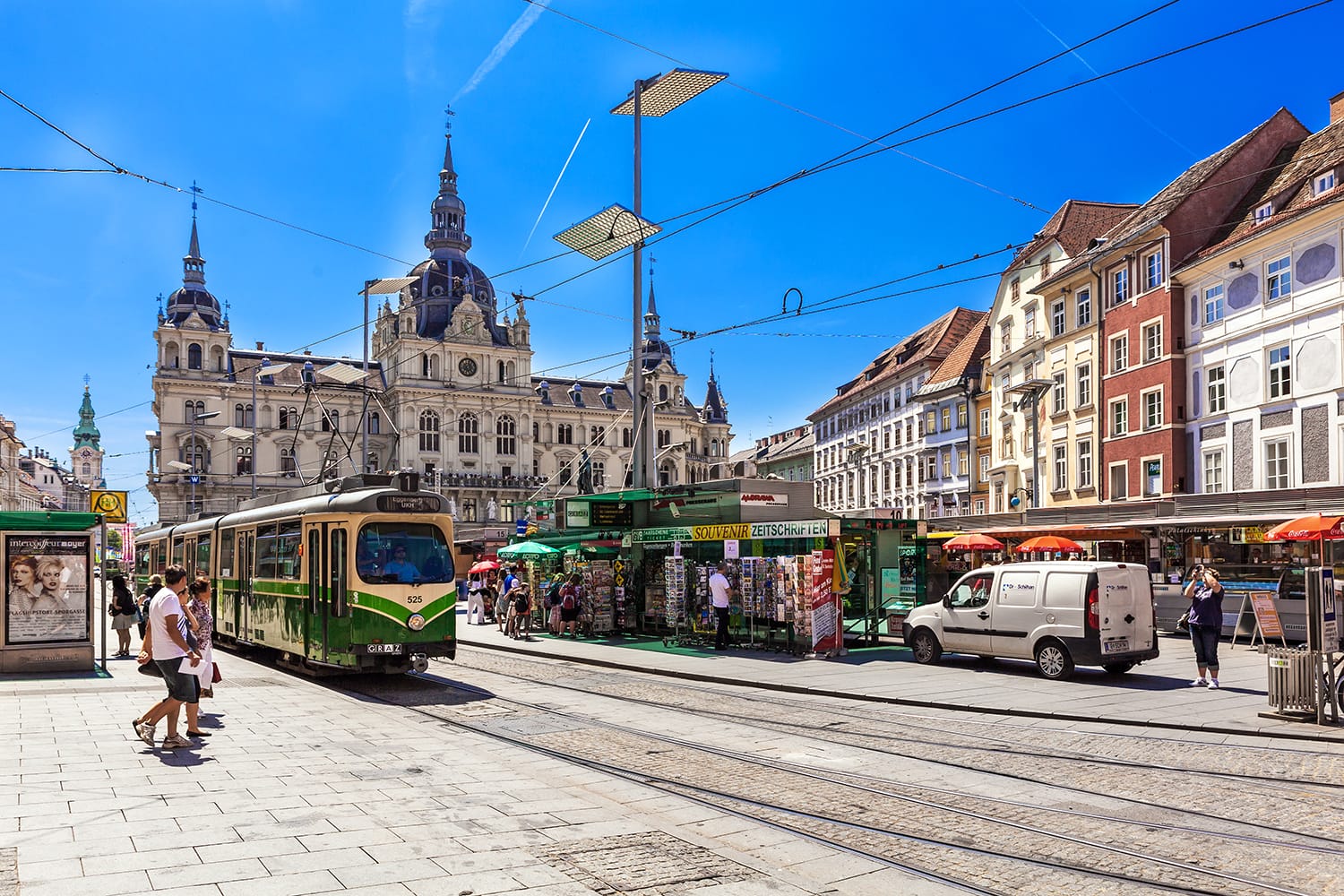
Graz Cathedral and Ferdinand Mausoleum
Religion has a key role in Austrian society, and the city’s most important place of worship is Graz Cathedral. Dedicated to St. Giles, Graz Cathedral was built in the mid-15th century on the site of a previous church. The cathedral features a Gothic exterior and a Baroque interior that boasts a vaulted ceiling over the altar.
After seeing the cathedral, be sure to head next door to the neighboring Mausoleum of Emperor Ferdinand II. The emperor commissioned this for himself in the 17th century, and it has a strong Italian design due to the men who worked on it. Inside, you’ll find lavish artwork and statues. Interestingly, while the grave of Emperor Ferdinand in the vault is rather understated, the same can’t be said for the red marble sarcophagus of his mother, Maria of Bavaria.
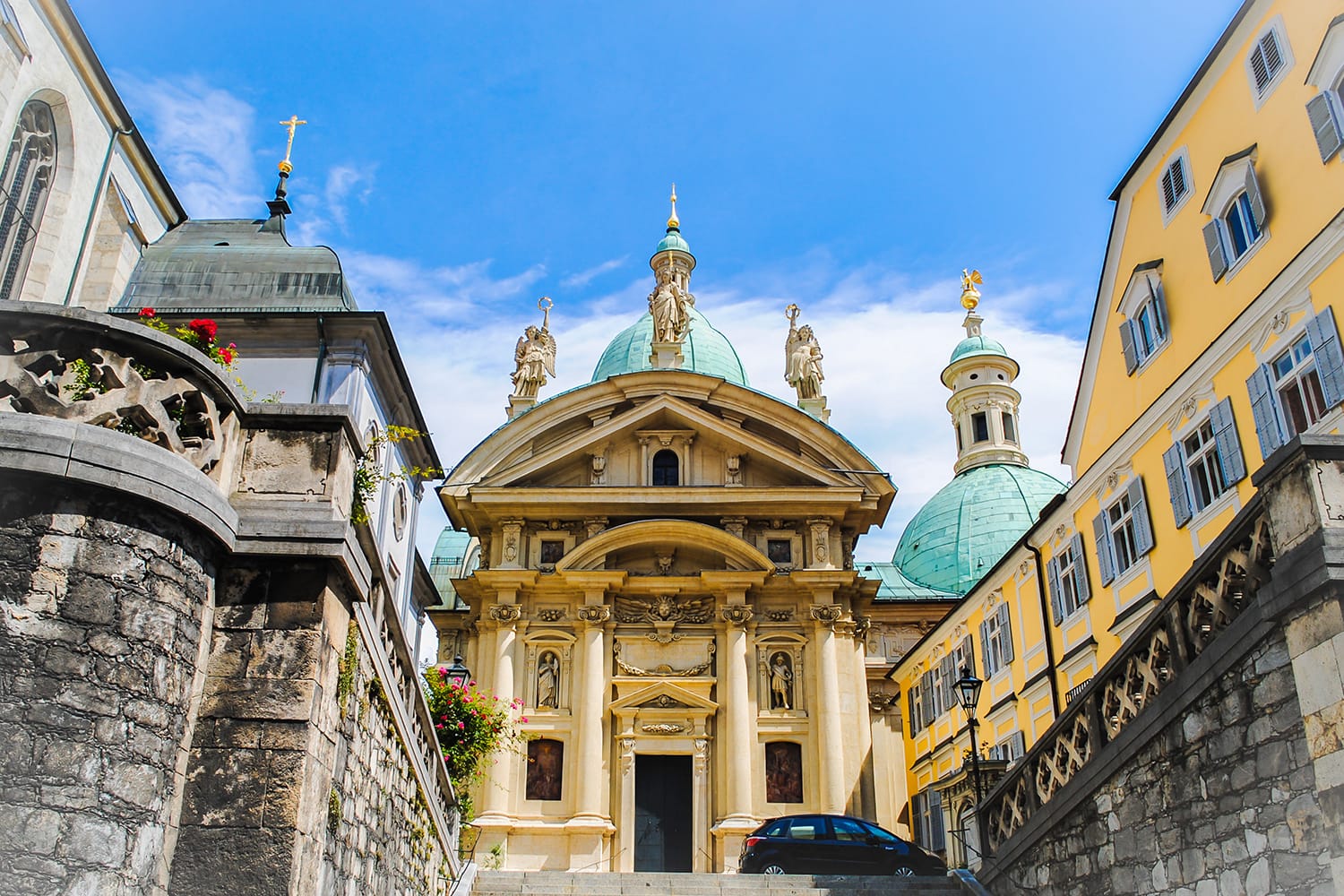
Murinsel
Even though Graz is quite a traditional place, it does have its moments of quirky modern flair, as seen with the curious Murinsel. Floating out in the Mur River, this so-called island is actually man-made and was constructed to honor Graz’s designation as 2003 European Capital of Culture. Shaped like a bowl or a shell, the island is made from a striking mix of steel and glass and was designed by New York City artist Vito Acconci. Built into the island are an open-air amphitheater and a café, as well as two pedestrian bridges connecting to the riverbanks.
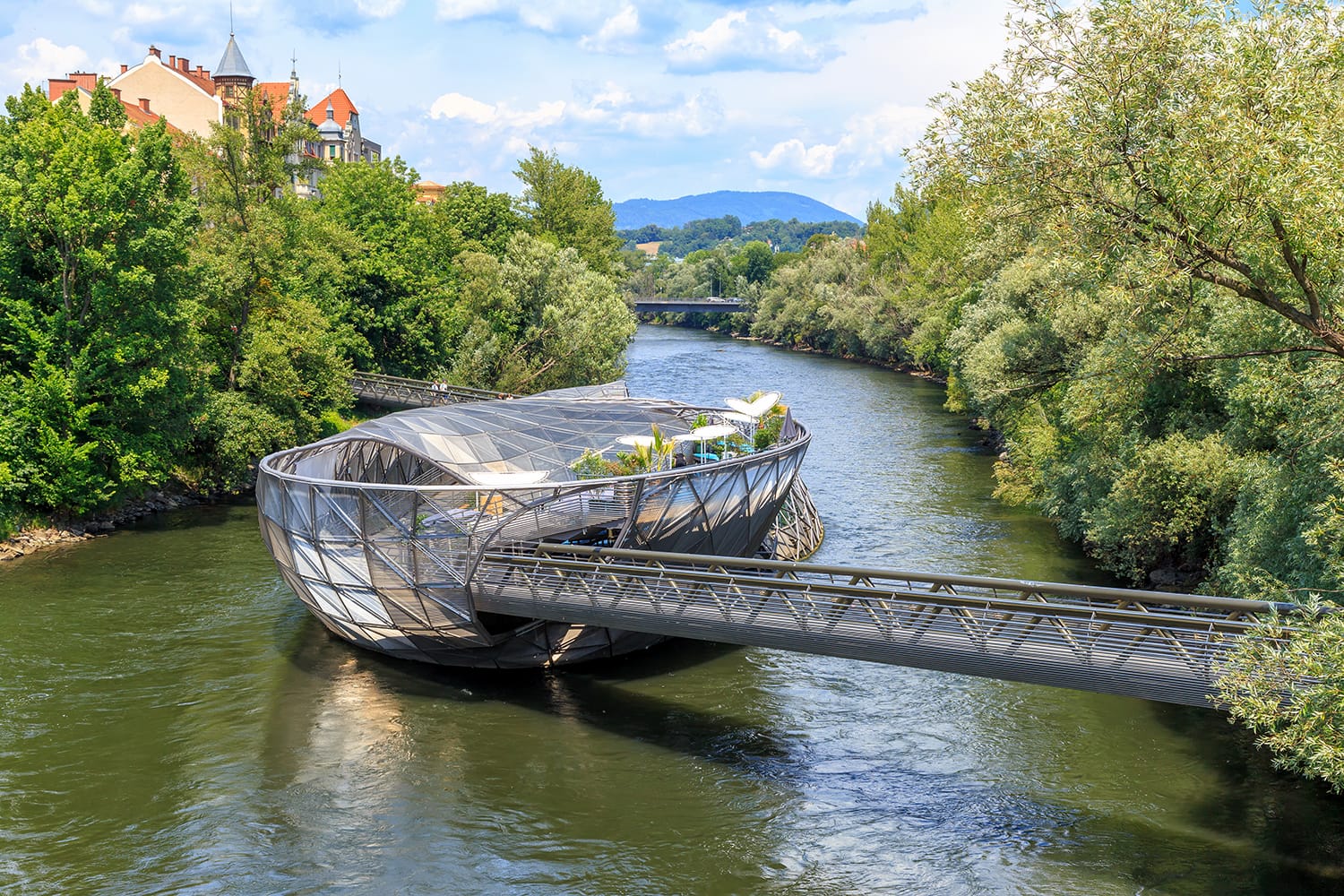
Kunsthaus Graz
Another modern landmark introduced to Graz in 2003 for its year as European Capital of Culture was the Kunsthaus Graz, the Graz Art Museum. Rather than complement Graz’s historic character, the museum’s design goes in the opposite direction. It’s tough to describe the design, which includes a shapeless roof made from acrylic, but know that locals have nicknamed it the Friendly Alien. Beyond checking out the exterior design, art lovers will want to head inside and see its contemporary art exhibits.
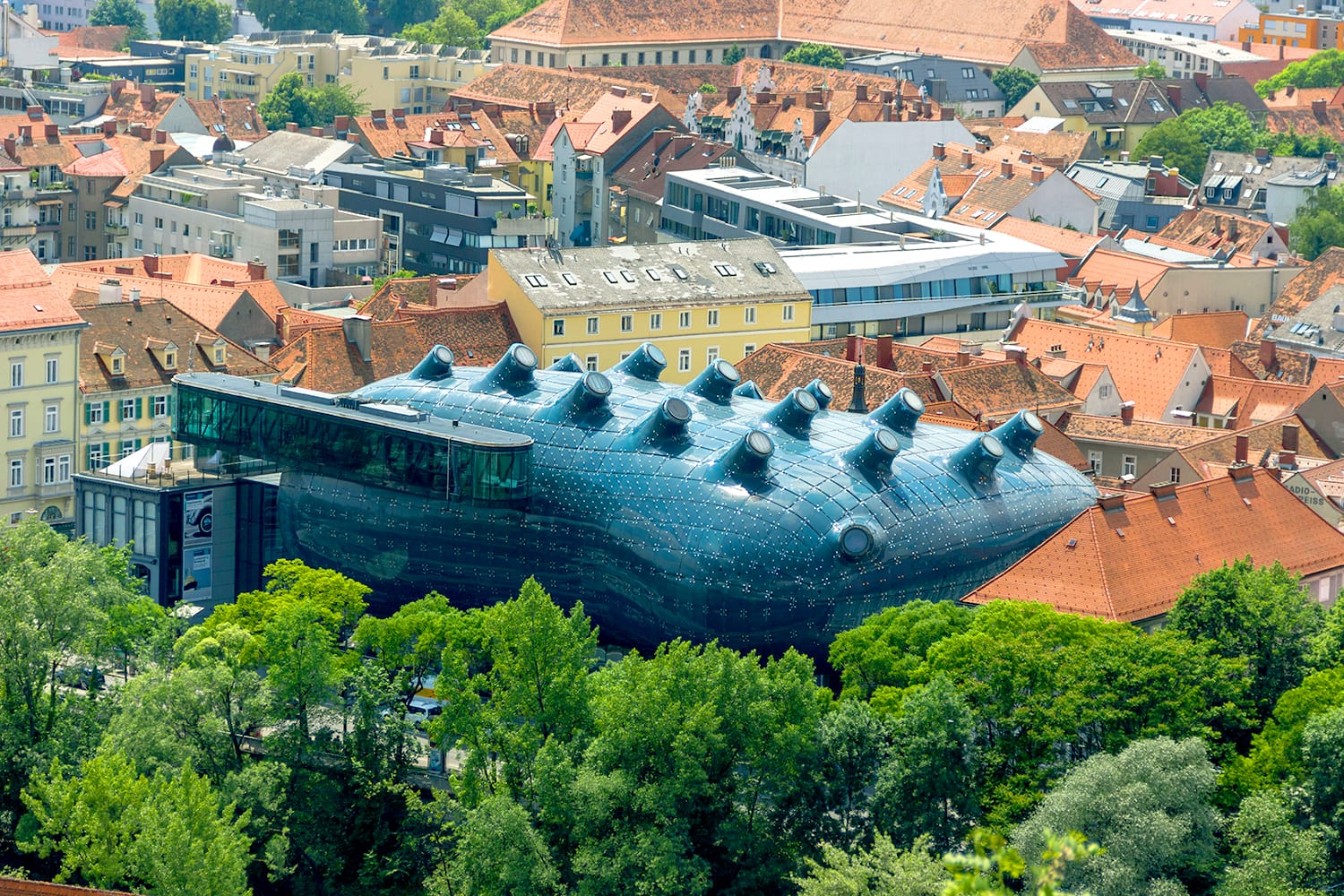
Day 2 in Graz
On your second day in Graz, there’s still more of the Old Town to see but also some landmarks that lie a little further from the city center.
Kaiser-Josef-Platz Market
A nice way to begin your second day is with a visit to one of Graz’s most popular markets at Kaiser-Josef-Platz. The farmer’s market takes place every day except Sunday and is full of produce, often organic, from the region of Styria. Even if you don’t feel like buying fruit, bread, or other items, markets like this are always a good way to gain some local insight.
Graz Park
Just a short walk from the market you’ll find the beautiful green space of Graz Park, which surrounds the northern end of the city center. This peaceful city park has walking paths linking its pleasant lawns, elegant fountains, and various statues and memorials. If you’ve bought some food from the market, there couldn’t be a better setting to enjoy it in.
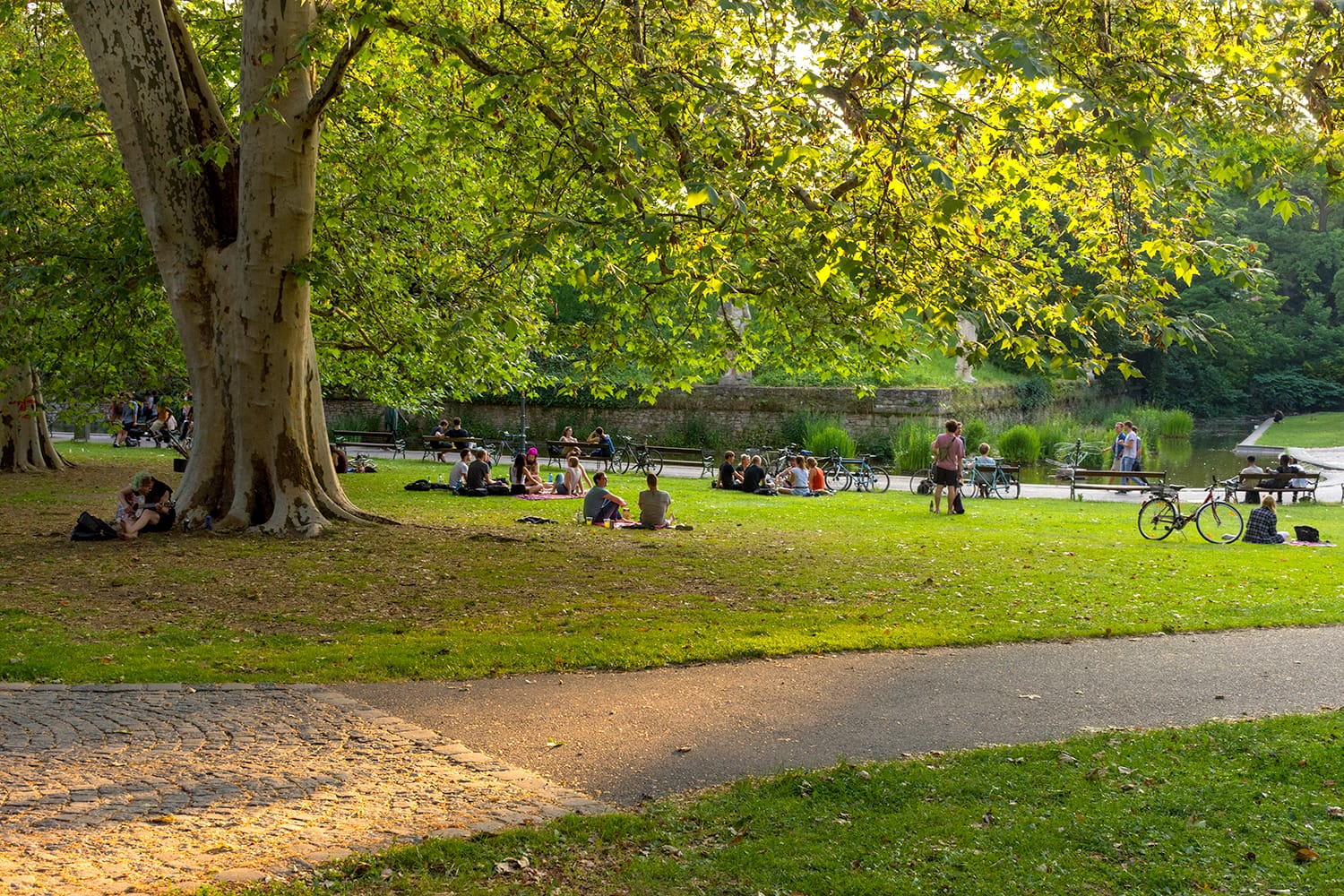
Double Spiral Stairs
Neighboring Graz Park, you’ll find your next Graz sight, the city’s 15th-century castle simply known as the Burg. Despite being a castle with a long history, visits here almost exclusively focus on one feature of the Burg: its double spiral staircase. This is because the sight of mirror image staircases spiraling upwards is mesmerizing and not something you’ve likely seen before. The stairs are also known as the Stairs of Reconciliation due to the symbolism granted by their shape.
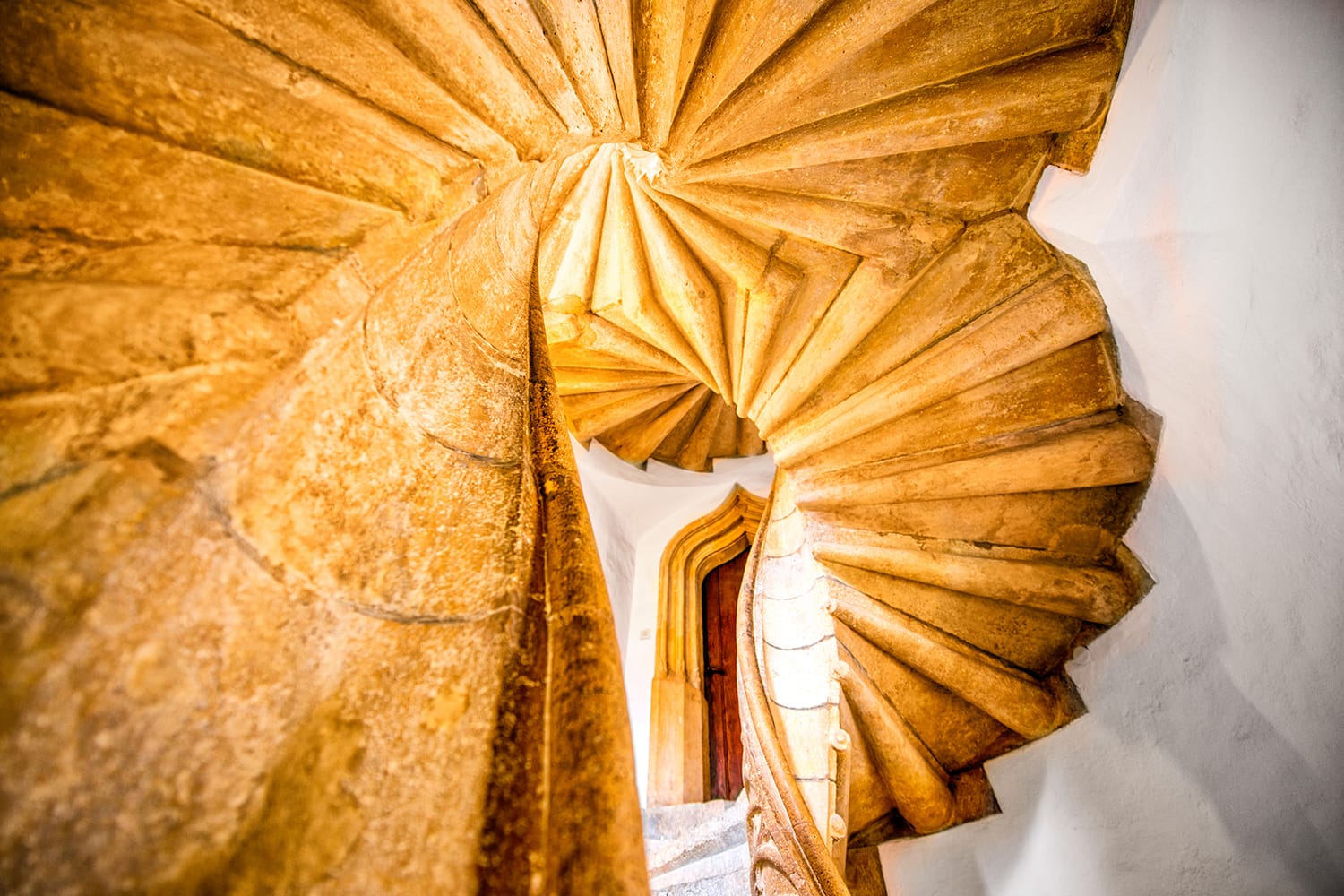
Eggenberg Palace
Leaving the Old Town for the time being, venture out west to see the beautiful Eggenberg Palace. As soon as you stand in front of the gates to the palace grounds, you’ll understand why you came all the way out here. In the distance, you’ll catch a glimpse of the exquisite Baroque architecture of the palace while also noticing the expansive palace grounds that lie before you.
As you stroll around the grounds, you’ll find gardens, ponds, peacocks, and even a little café in a pavilion. There’s also a Lapidarium full of Roman stone monuments and the relatively new Archaeology Museum, which houses artifacts from prehistory and the Roman era. Eventually, you’ll walk up to Eggenberg Palace to admire this 17th-century palace and the museums held inside. Many find the Alte Galerie here the highlight thanks to its artwork that spans the medieval age and early modern period.
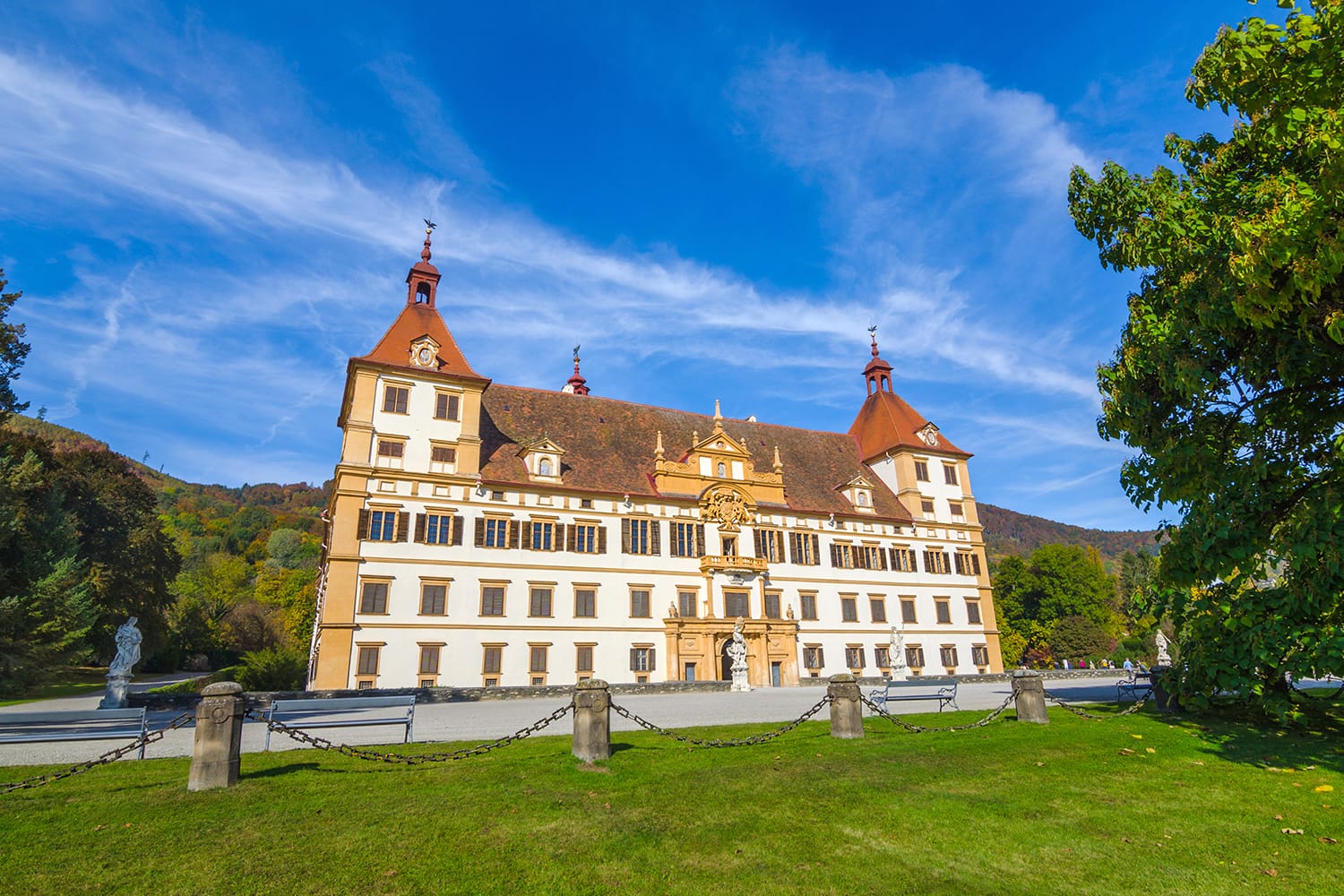
Landeszeughaus
One of Graz’s proudest and most significant museums is the Landeszeughaus, known in English as the Styrian Armory. As its name suggests, this is a museum of weaponry, armor, and warfare, and it’s the largest historic armory in the world. The museum includes roughly 32,000 pieces of weaponry and artifacts used in war from the 15th to 19th centuries. Graz and the region of Styria were no strangers to war thanks to their regular dealings with invasions by the Ottoman Empire.
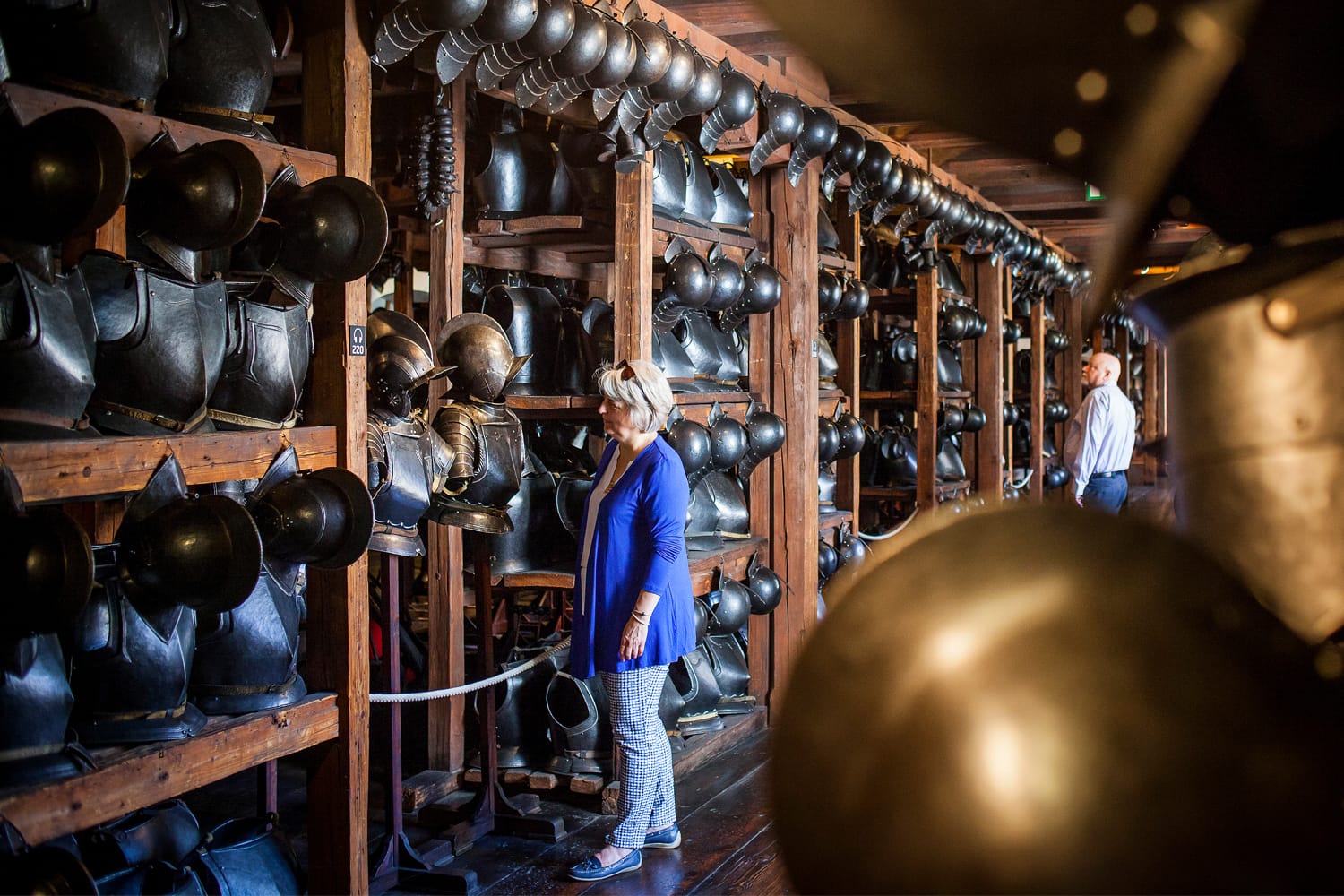
Landhaus Courtyard
After seeing the exhibits of the Landeszeughaus, find your way round to the rear of the building. There, hidden away and obscured from the street, is the incredible inner courtyard of the Landhaus palace. Around the courtyard are three stories of arcades in an elegant Renaissance design that bear a strong Italian influence. This beautiful palace from the 16th century was once the home of the Styrian regional assembly, and the courtyard is now used for concerts and performances.
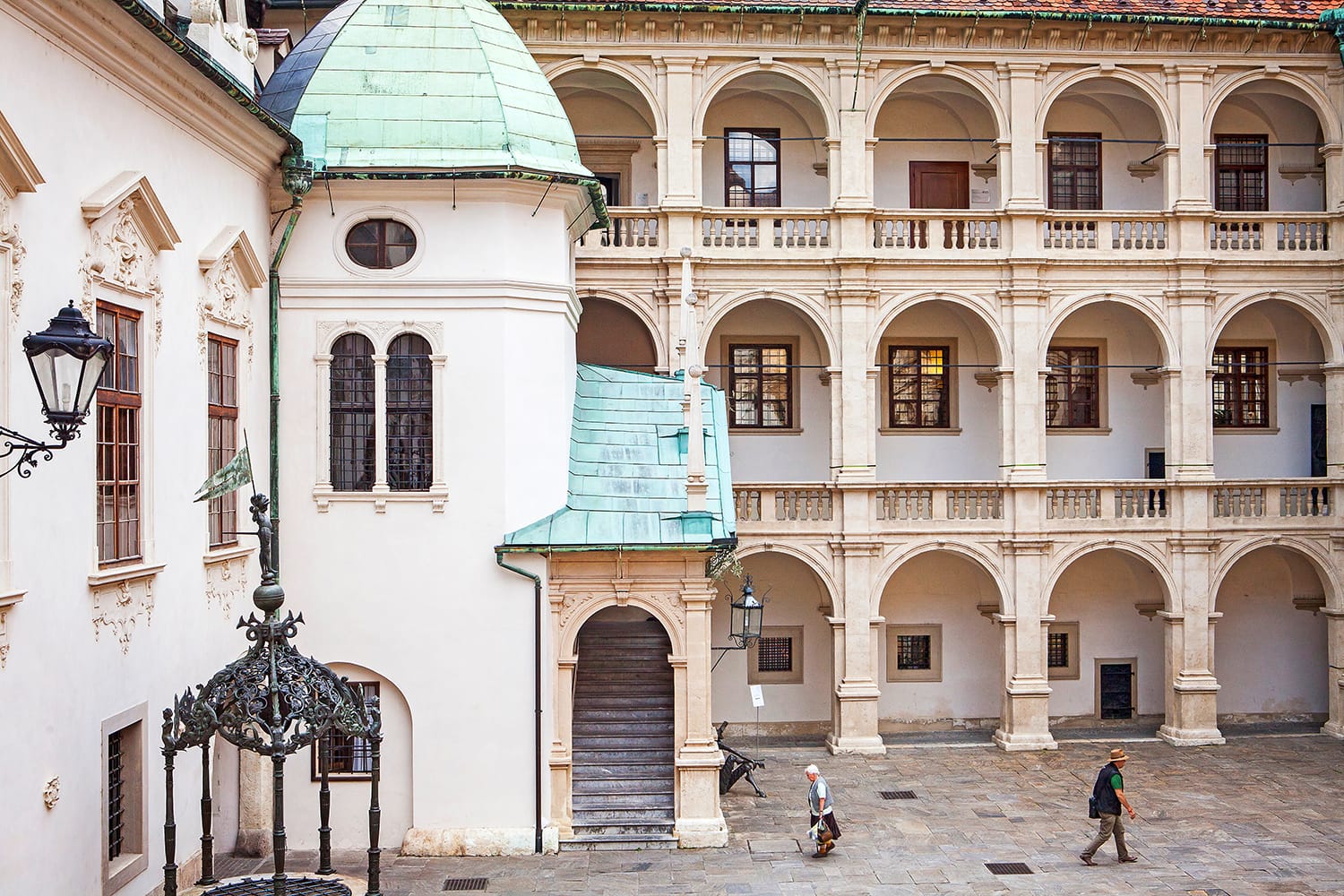
Herz-Jesu-Kirche
Our final place to visit in Graz is the city’s largest church, the Herz-Jesu-Kirche, located in the neighborhood of Sankt Leonhard. Besides being the city’s largest church and boasting the third-highest church tower in the country, the real appeal of this church is its striking neo-Gothic design. The church isn’t particularly old, having been built in the late 19th century, but its distinctive exterior and superb stained glass windows are well worth the visit.
Now you should have a good idea of how to see Graz in 2 days. You’ll definitely be glad you took the time to visit!


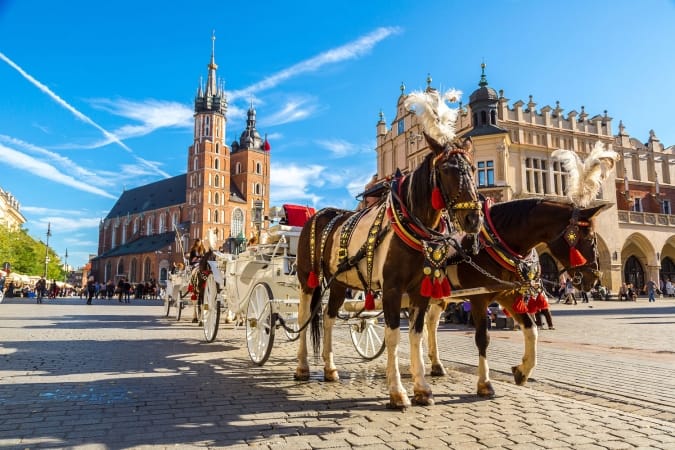
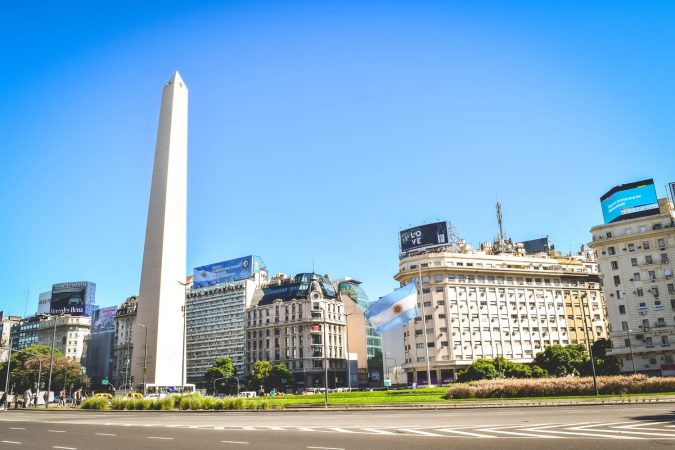



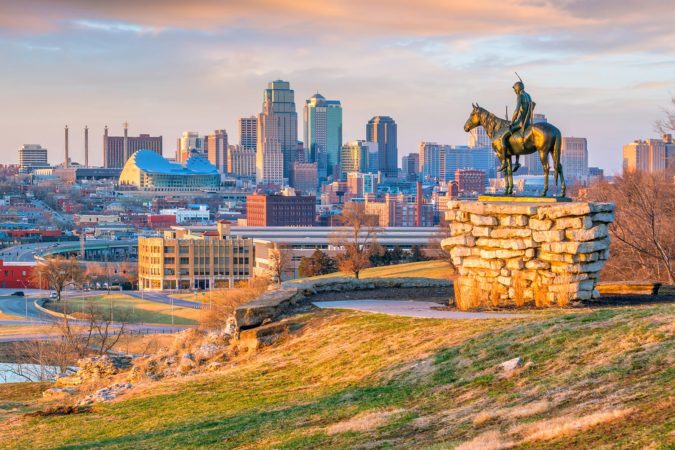
me
I would also suggest visiting Mariatrost, which a very beautiful city in a hill. Hilmteich is a park in that area that is also worth visiting.